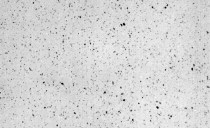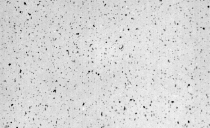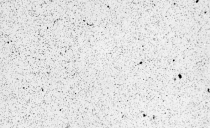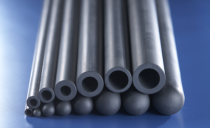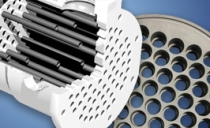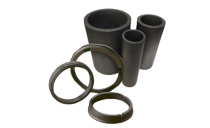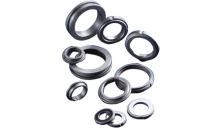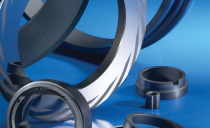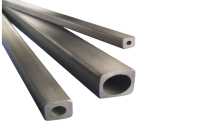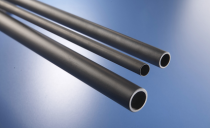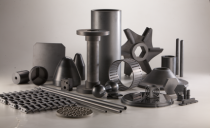Hexoloy® SiC Material
Material Properties
The Hexoloy® SiC material was developed in late 1970s. Since that time, Saint-Gobain Performance Ceramics & Refractories’ engineers have successfully commercialized Hexoloy® in a wide range of industrial applications. The unique properties of Hexoloy® SiC allow it to outperform commonly used ceramic materials in harsh operating conditions. Saint-Gobain Performance Ceramics & Refractories’ application engineers are on hand to assist with technical projects, supporting customers in the design of cost effective, high performing products that can meet current and future application requirements.
Manufacturing Hexoloy® Silicon Carbide
How Saint-Gobain Performance Ceramics & Refractories manufactures its precision engineered Hexoloy® sintered silicon carbide products?
Saint-Gobain Performance Ceramics & Refractories pioneered the technology to manufacture a pressureless sintered silicon carbide material - Hexoloy® - in the late 1970s.
Forming Options
Economical forming is determined by shape, quantity volume and tolerances of the final part.
Dry pressing to size is the most economical forming method for volumes of 300 pieces or more, which helps justify the initial expense of tooling designed specifically for each part.
Isostatic pressing is best suited to low volumes and prototype items.
Pre-Sinter (Green) Machining
Machining in the pre-sintered, or green, state is desirable because it allows manufacturing of complex finished shapes without expensive grinding of sintered material.
Green machining is accomplished using conventional processes. Stock removal can be accomplished 15 times faster in the green state than in the sintered state.
Green machining provides parts to tolerances of 0.5% to 1.0% of their final dimensions. Typical green machined surface finishes range between 32 and 64 µin.
Grinding and Finishing
Precision grinding capabilities have been developed to meet the exacting specification requirements required by the automotive, aerospace and nuclear industries.
Saint-Gobain Performance Ceramics & Refractories has the expertise to grind to close tolerances on most shapes (.0005").
Typical ground parts hold finishes of 16 µin or better. When surface finishes are critical in improving friction and wear performance, finishing operations can improve surfaces up to 4 µin providing surface flatness to one helium light band.
Quality Assurance
Saint-Gobain Performance Ceramics & Refractories maintains the highest level of quality by leveraging state-of-the-art, non-destructive evaluation equipment for final quality inspections of internal structures.
These techniques include bulk and surface wave ultrasonics, fluorescent dye penetrant, radiography, acoustic emission, and photomicrography.
HEXOLOY® Grades
Hexoloy SA SiC Material
Hexoloy SA SiC Material
Discover the benefits of Saint-Gobain Performance Ceramics & Refractories’ Hexoloy® SA silicon carbide material.
Hexoloy SE SiC Material
Hexoloy SE SiC Material
Discover the benefits of Saint-Gobain Performance Ceramics & Refractories’ Hexoloy® SE silicon carbide material.
Hexoloy SG SiC Material
Hexoloy SG SiC Material
Discover the benefits of Saint-Gobain Performance Ceramics & Refractories’ Hexoloy® SG silicon carbide material.
Hexoloy SP SiC Material
Hexoloy SP SiC Material
Discover the benefits of Saint-Gobain Performance Ceramics & Refractories’ Hexoloy® SP silicon carbide material.
Related Products
Hexoloy® SE Thermocouple Protection Tubes
Discover Saint-Gobain Performance Ceramics & Refractories’ range of products for thermocouple sensor protection.
Hexoloy SE Sintered Silicon Carbide Tubes and SA Tube Sheets
Discover Saint-Gobain Performance Ceramics & Refractories’ range of silicon carbide products for shell and tube heat exchangers.
Hexoloy Seal Tubes
Hexoloy® SA sintered silicon carbide seal tubes are available in a wide range of OD and ID combinations. Seal tubes are unground and sold with “as-fired”...
Hexoloy Seal Blanks
Discover Saint-Gobain Performance Ceramics & Refractories’ extensive range of ceramics for mechanical seals.
Hexoloy SiC and Noralide Si3N4 Seals
Discover Saint-Gobain Performance Ceramics & Refractories’ range of engineered and ground faces for mechanical seals.
Silicon Carbide Beams
Discover Saint-Gobain Performance Ceramics & Refractories’ extensive range of sintered silicon carbide beams.
Hexoloy SiC Process Tubes
Discover Saint-Gobain Performance Ceramics & Refractories’ range of process tubes for high temperature processes.
Hexoloy Custom Shapes
Discover Saint-Gobain Performance Ceramics & Refractories’ extensive range of silicon carbide technical ceramics.
